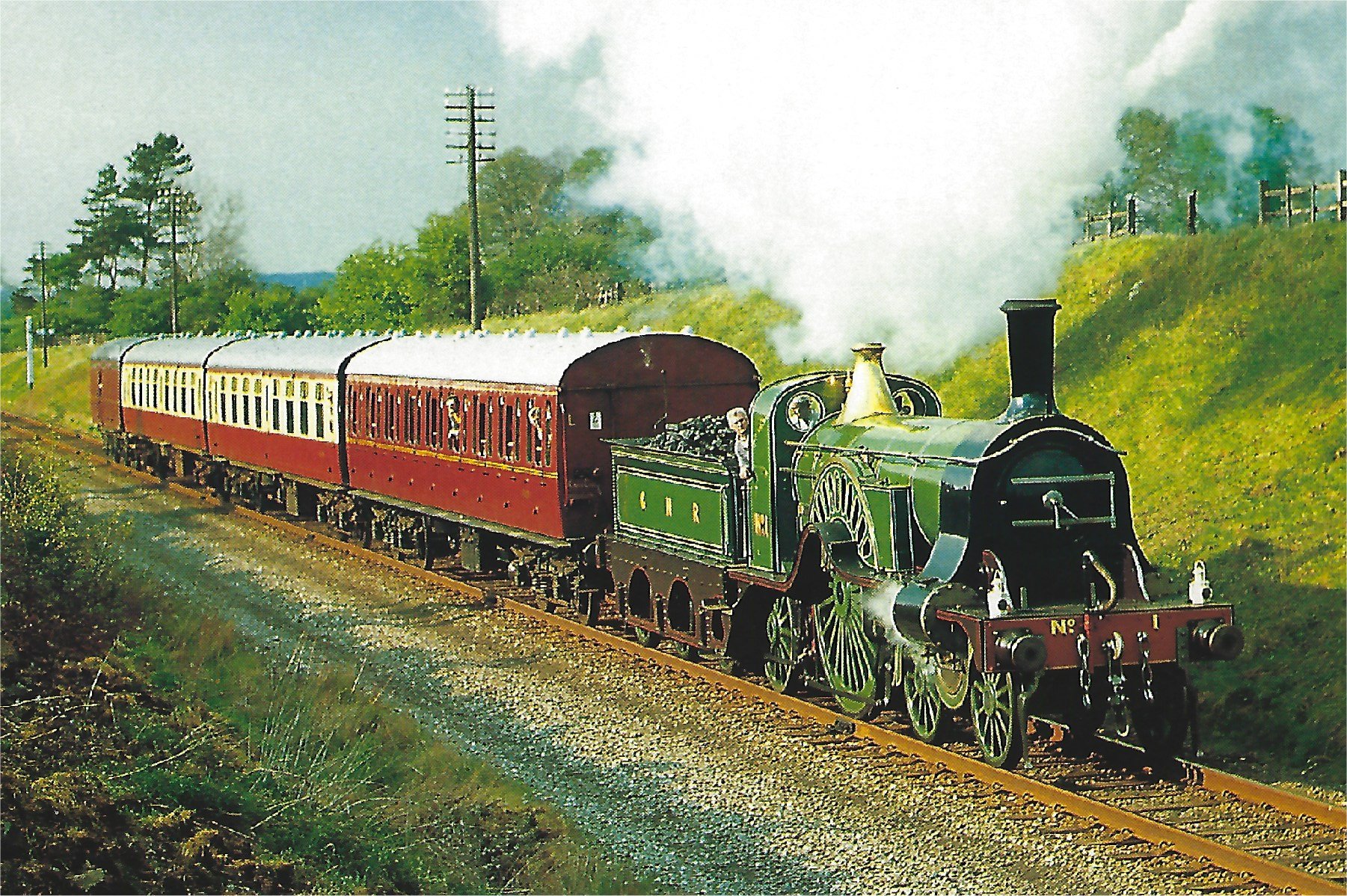|
STIRLING EIGHT-FOOT SINGLE-DRIVER The standard by which locomotive beauty is judged, and the final anachronistic fling of a type long abandoned elsewhere, the 'single driver' was in 1870 a top-ranking express locomotive on the railways of Britain. It had elegance, style and 'class', and was typically British in every detail, All the same, these fascinating machines were completely out of tune with the world railway scene in the late nineteenth century. |
||
|
GNR Stirling Single No. 1 This locomotive is the most famous of all English single drivers, and the most elegant, with her large central driving wheels surmounted by splashers with radial openings, like a paddle steamer. Patrick Stirling, engineer of the Great Northern Railway, designed the first of this series of express locomotives in 1870, and a total of 53 were built up to 1895. mechanically very simple, with two external single expansion cylinders these engines could reach 75 mph with surprisingly heavy loads of as many as 15 coaches, albeit wooden bodied six wheelers in the main . But as trains became heavier, these 53 locomotives steadily lost their prime position and early in the twentieth century they were no longer to be found heading the famous 10 0'clock departure from King's Cross station in London, the 'Flying Scotsman'. |
The first operation of a preserved locomotive. In 1938, the Stirling 'Eight Footer' was only a relic, exhibited in the London & North Eastern Railway Museum at York. But the Directors of the LNER, to publicise the new 'Flying Scotsman' train, invited the Press to make a comparative journey, beginning with the train of 1888, hauled by the veteran No. l, This event caused more interest than had been expected, and the first groups of amateurs were formed to promote the running of old preserved locomotives under steam. At first, museum curators and the railway companies did not take kindly to the idea: the curators because it involved extra work and put their treasures at risk; and the companies because it was not easy to fit such workings into already busy timetables. The objections began, but the operation of historic steam has flourished in spite of them. |
The single driver A single driver is a locomotive with only one driving axle and therefore without coupled wheels. Coupling driving wheels makes it possible to increase the tractive effort and to avoid slipping on starting, and that is why, from the middle of the nineteenth century most railways ceased using single drives and adopted coupled engines such as 2-4-0s, 2-4-2s, and 4-4-0s. But soon the engineers discovered a disadvantage: the movement of long coupling rods gave rise to persistent lateral hunting, or to rolling at certain critical speeds, which could be dangerous. This had to be cured by adding counterweights, lightening the coupling rods and recalculating stresses. This is why some engines, particularly in England, remained faithful to the single driver for working very fast and light trains. |
|
Technical Data Building dates: 1870-1895 |
|
|
- Hits: 966


